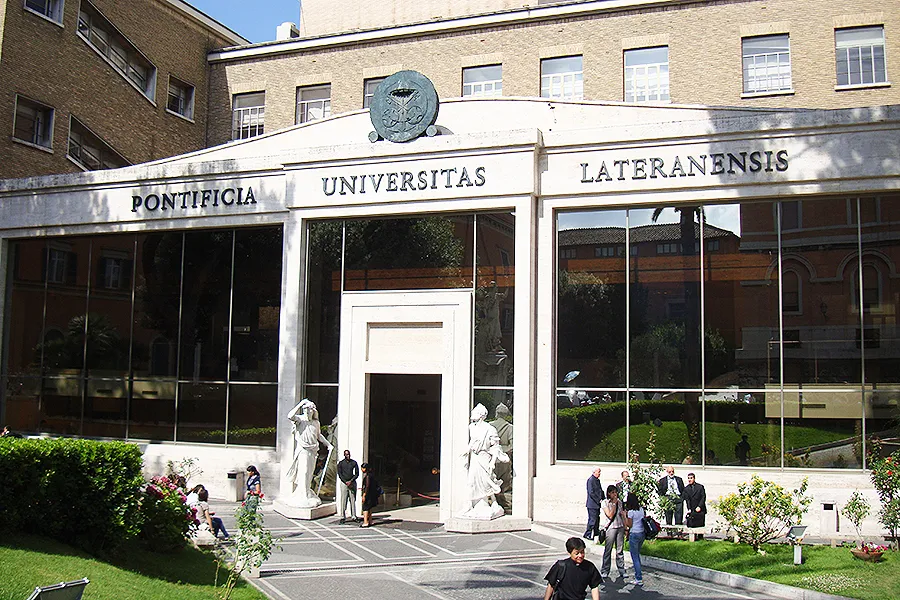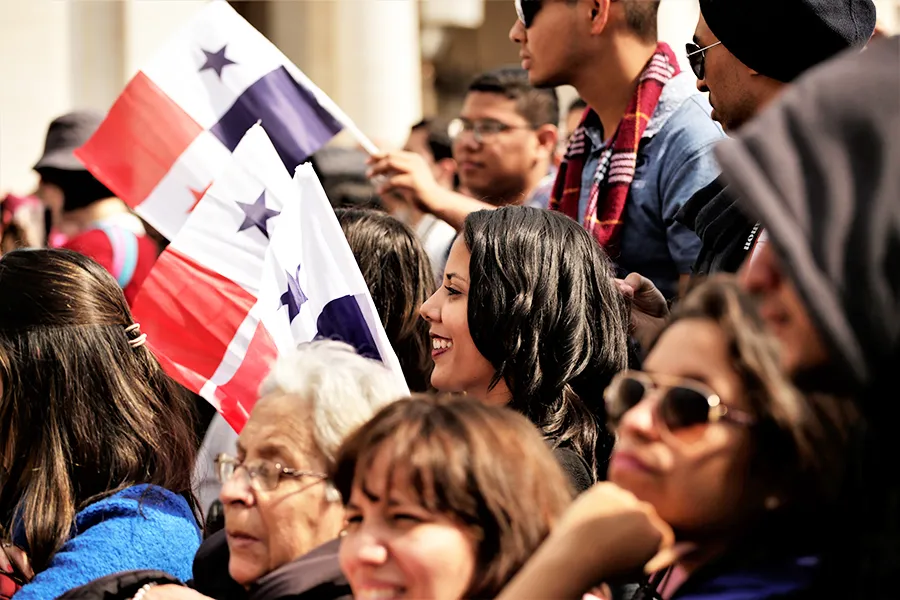
Rome, Italy, Jun 7, 2018 / 01:58 pm (CNA).- For the first time in its 245-year history, a lay professor has been appointed rector of the Pontifical Lateran University, also known as the “Pope’s university.”
Vincenzo Buonomo, a professor of international law and a consultant to the Holy See since the 1980s, was appointed rector of the Pontifical Lateran University by Pope Francis.
He will begin the position July 1, succeeding Archbishop Enrico dal Covolo, who has been rector of the university for 8 years and two consecutive mandates.
Born April 16, 1961 in the southern Italian city of Gaeta, Professor Buonomo is married with two children.
He earned from the Pontifical Lateran University a doctorate juris utriusque- an academic doctorate in both canon and civil law, and began teaching there in 1984.
He became a full professor of the university in 2001, he was from 2006–2012 dean of the civil law department, and presently serves as coordinator of the university’s doctorates. He is also the scientific director of the Masters in New Horizons of Cooperation and International Law program, which the Lateran University manages with the NGO FOCSIV.
Although his career has been mostly linked to the Pontifical Lateran University, Buonomo is also a professor of international organization at the Catholic-inspired LUMSA University in Rome and visiting professor of international law at the Sophia University Institute of Loppiano.
Beyond his academic career, Buonomo has has long-term involvement with the Holy See.
He has been the chief of office for the Holy See’s Representation to Food and Agriculture Organization and related UN bodies (namely, FAO, IFAD and World Food Program). He also represents the Holy See on the UN Human Rights Council’s advisory committee, and has twice been a part of the Vatican’s delegation to present reports before the UN Committee on the Rights of the Child.
Under Pope Francis, Buonomo provided advice for the Comprehensive Agreement signed by the Holy See an Palestine in June 2015.
On Jan. 25, 2014, he was also appointed an advisor to the Vatican City State’s administration.
Buonomo began collaborating with the Vatican in the 1980s, when Cardinal Casaroli was Secretary of State.
He was was also a close collaborator with former Secretary of State Tarcisio Bertone, and edited a book of speeches Cardinal Bertone delivered in his capacity of Secretary of State.
His appointment as rector of the Pope’s university is a sign of continuity, and, at the same time, a break from tradition.
Buonomo has made his career in the Lateran and Vatican ranks without being linked to any particular ideological group, and so he will be able to carry on the tradition linking the Lateran Pontifical University directly to the pope himself. The Pope’s university will also keep its special bond with the pope through Cardinal-elect Angelo De Donatis, the pope’s vicar for the Diocese of Rome, who serves as the Lateran’s Grand Chancellor.
At the same time, Buonomo is the first lay person to be named for the post.
The appointment of a lay person signals that the Pope wants the Lateran University to make improvements: following his curriculum, it is likely Professor Buonomo will lead the Pontifical Lateran University in a more international direction, and increase the caliber and standards of academic offerings.
Any new approach must be made according to the university’s storied traditions. The Pontifical Lateran University is formally a university since 1959, but its origins date back to 1773. The university has four departments (philosophy, theology, civil law and canon law) and two Institutes (Redemptor Hominis and Utriusque Iuris), plus a post-graduate specialization center. Teachers and students come from five continents.
If you value the news and views Catholic World Report provides, please consider donating to support our efforts. Your contribution will help us continue to make CWR available to all readers worldwide for free, without a subscription. Thank you for your generosity!
Click here for more information on donating to CWR. Click here to sign up for our newsletter.




Leave a Reply